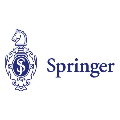The sensitivity to blockages is a key challenge for the high-frequency (5G millimeter wave and 6G sub-terahertz) wireless networks. Since these networks mainly rely on line-of-sight (LOS) links, sudden link blockages highly threaten the reliability of the networks. Further, when the LOS link is blocked, the network typically needs to hand off the user to another LOS basestation, which may incur critical time latency, especially if a search over a large codebook of narrow beams is needed. A promising way to tackle the reliability and latency challenges lies in enabling proaction in wireless networks. Proaction basically allows the network to anticipate blockages, especially dynamic blockages, and initiate user hand-off beforehand. This paper presents a complete machine learning framework for enabling proaction in wireless networks relying on visual data captured, for example, by RGB cameras deployed at the base stations. In particular, the paper proposes a vision-aided wireless communication solution that utilizes bimodal machine learning to perform proactive blockage prediction and user hand-off. The bedrock of this solution is a deep learning algorithm that learns from visual and wireless data how to predict incoming blockages. The predictions of this algorithm are used by the wireless network to proactively initiate hand-off decisions and avoid any unnecessary latency. The algorithm is developed on a vision-wireless dataset generated using the ViWi data-generation framework. Experimental results on two basestations with different cameras indicate that the algorithm is capable of accurately detecting incoming blockages more than $\sim 90\%$ of the time. Such blockage prediction ability is directly reflected in the accuracy of proactive hand-off, which also approaches $87\%$. This highlights a promising direction for enabling high reliability and low latency in future wireless networks.
翻译:对封锁的敏感度是高频(5G毫升升升温波和6G低千兆赫)无线网络的一项关键挑战。 由于这些网络主要依赖视距(LOS)链接, 突如其来的阻塞会高度威胁网络的可靠性。 此外, 当LOS链接被阻断时, 网络通常需要将用户交给另一个LOS基地站, 这可能带来关键的时间延迟, 特别是如果需要搜索一个大型的窄波代码簿。 解决可靠性和延迟度挑战的一个有希望的方法是让无线网络的准确性反应。 Proaction基本上可以让网络预测阻塞, 特别是动态阻塞, 并提前启动用户手动。 本文提供了一个完整的机器学习框架, 使无线网络能够借助在基地站部署的 RGB 相机所捕捉的视觉数据进行预言。 特别是, 本文提出一个有远见的无线通信解决方案, 利用双调机器进行不动的预估未来阻断。 这个解决方案的基础是用一种深层次的预测能力基础, 也就是通过直观和无线数据生成的计算, 。



